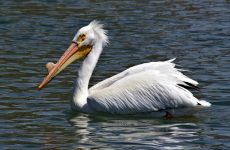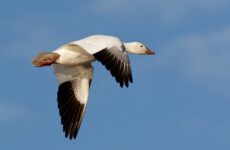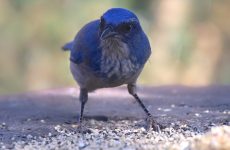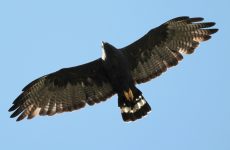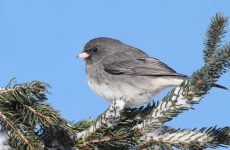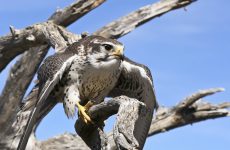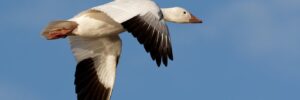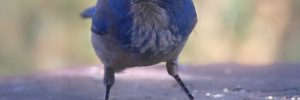
There are several species of sparrow that can be spotted in Utah all year, but spring is a terrific time to spot them as many species start arriving for breeding over the summer, and a couple of species can be seen on their migration through the state.
This guide will help you identify all 21 species of sparrows by sight and sound that can be spotted in Utah. Also, find out what time of year to spot them and some fun facts.
It is worth taking the time to get to know these energetic little songbirds that you will frequently spot and hear as they are fun to watch. Juncos and Towhees are also sparrows, so they are included in this guide.
Sparrows are often described as ‘little brown jobs’ by birders so it is obvious that it can be a challenge for even an experienced birder to recognize them.
Many sparrows have distinctive head markings and often migrate, so you can discount them at certain times of the year. These two pieces of information help with identification and are included in this guide.
Sparrows mainly eat seeds and insects, and they will often come to backyard feeders. Find out the other species of birds that regularly visit Utah and print a free ID chart.
This guide will help you identify the types of sparrows spotted in Utah that are classed as regularly occurring according to avibase and uses data collected from bird watchers on ebird to give real information about when these birds can be spotted.
When to Spot Sparrows in Utah
Knowing when you are most likely to spot sparrows can help reduce the guesswork with these similar-looking birds. This guide sorts these birds by when you are most likely to spot them.
Sparrows in Utah all year:
- House Sparrow
- Song Sparrow
- Spotted Towhee
- Abert’s Towhee
- Rufous-crowned Sparrow
Sparrows in Utah in summer:
- Chipping Sparrow
- Lark Sparrow
- Green-tailed Towhee
- Brewer’s Sparrow
- Savannah Sparrow
- Vesper Sparrow
- Black-throated Sparrow
- Fox Sparrow
- Sagebrush Sparrow
- Black-chinned Sparrow
- Grasshopper Sparrow
Sparrows in Utah in winter:
- Dark-eyed Junco
- White-crowned Sparrow
- American Tree Sparrow
Sparrows in Utah during migration:
- Lincoln’s Sparrow
- Lark Bunting
Identifying Sparrow’s Songs
If you learn a few of the songs of sparrows by listening to the audio recordings in the guide, it will help, especially with some of the more distinctive sparrow songs. Such as White-throated Sparrows that sing long slow notes that change pitch and sound like a person whistling.
Field Sparrows can be easy to miss, except for their song that speeds up to a high trill at the end that is often likened to a bouncing ball coming to a stop.
Also, how about the strange buzz of the Grasshopper Sparrow or LeConte’s Sparrow? Have you heard them?
Sparrows in Utah All Year
House Sparrow
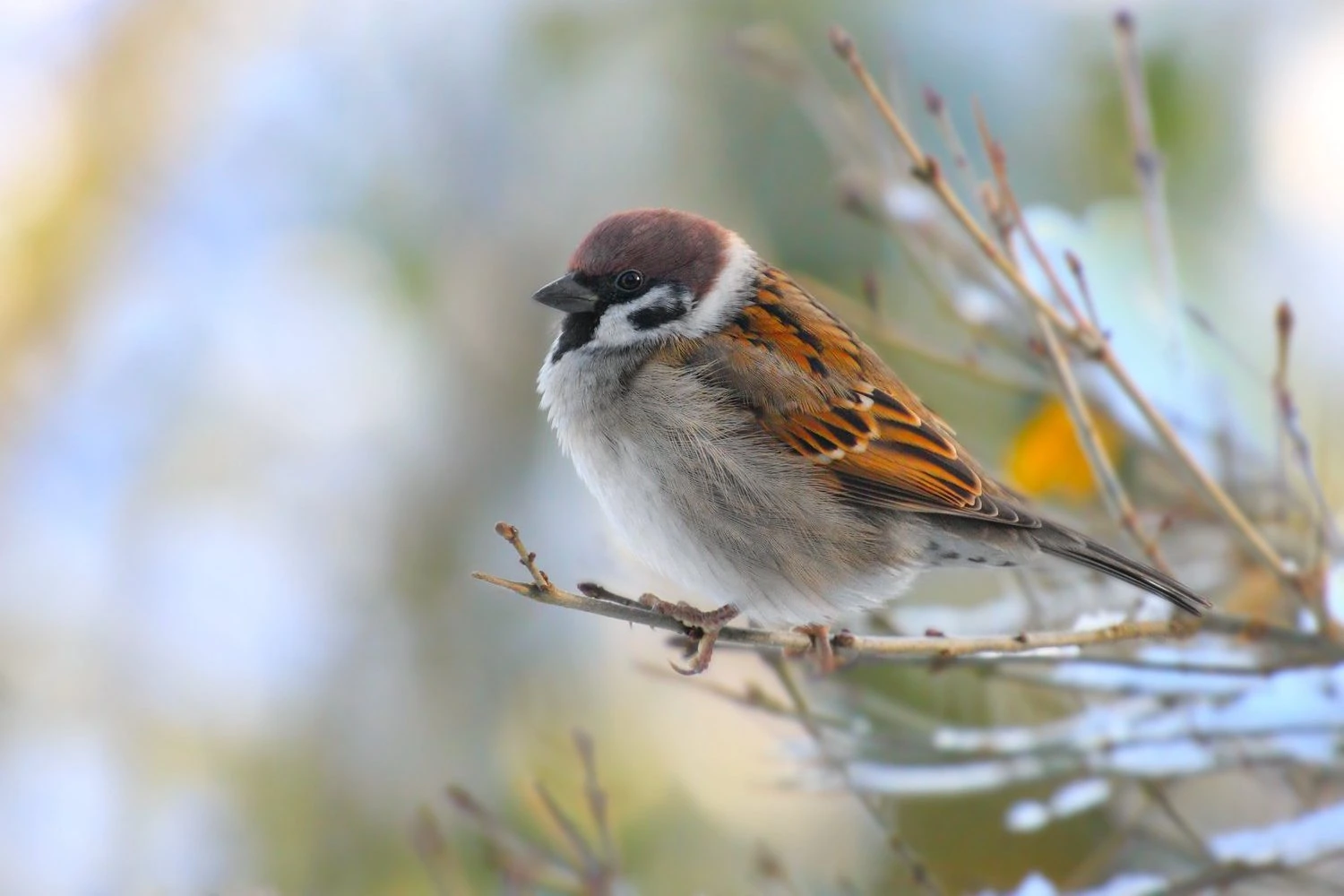
House Sparrows are an introduced species in Utah that can be spotted here all year. They do not migrate and occur in 22% of summer checklists and 26% of winter checklists submitted by the bird watchers for the state.
Song Sparrow
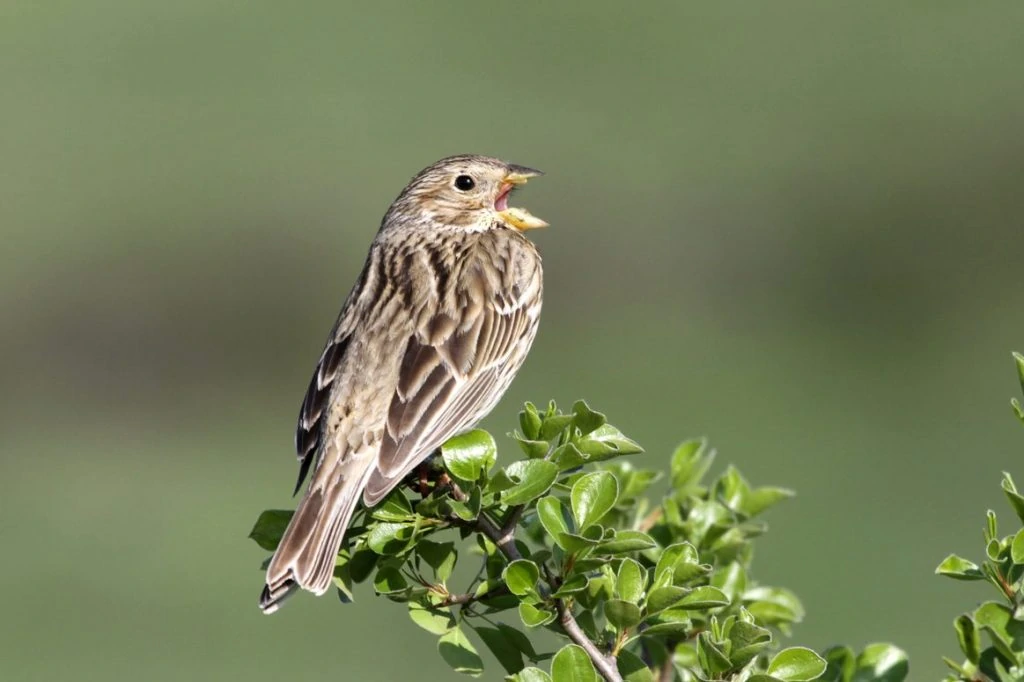
Song Sparrows are the second most frequently spotted sparrows in Utah during summer and the third most during winter. They can be spotted here all year and are recorded in 22% of summer checklists and 20% of winter checklists for the state.
Song sparrows are not as remarkable looking as other backyard birds, but these predominantly brown-streaked birds use their almost constant song to attract mates in spring and summer.
- Melospiza melodia
- Length: 4.7-6.7 in (12-17 cm)
- Weight: 0.4-1.9 oz (12-53 g)
- Wingspan: 7.1-9.4 in (18-24 cm)
Song Sparrow live all year in the northern US States. Those that breed in Canada migrate to southern US states for winter.
You can find Song Sparrows in open, shrubby, and wet areas, often perched on a low shrub singing. They are often found at backyard feeders.
Song Sparrows eat a wide variety of insects and plants, including beetles, caterpillars, midges, spiders, and earthworms. They will also eat buckwheat, sunflower seeds, raspberries, wild cherries, blackberries, wheat, and rice.
Song Sparrow sounds: They make a series of unconnected buzzing, trills, and notes rather than a melodious song. They also make sharp alarm calls and chatter calls when in groups.
Nests of Song Sparrows are made from grass and other plant material woven together and lined with soft grass and hair. They lay up to six eggs, which take around two weeks to hatch and just under two weeks for the young to leave the nest.
Attract Song Sparrows to your backyard by putting black oil sunflower seeds, cracked corn, and nyjer on platform feeders.
Fun fact: A study has found that Song Sparrows mix their playlist of songs, so they do not repeat and potentially bore prospective females!
Spotted Towhee
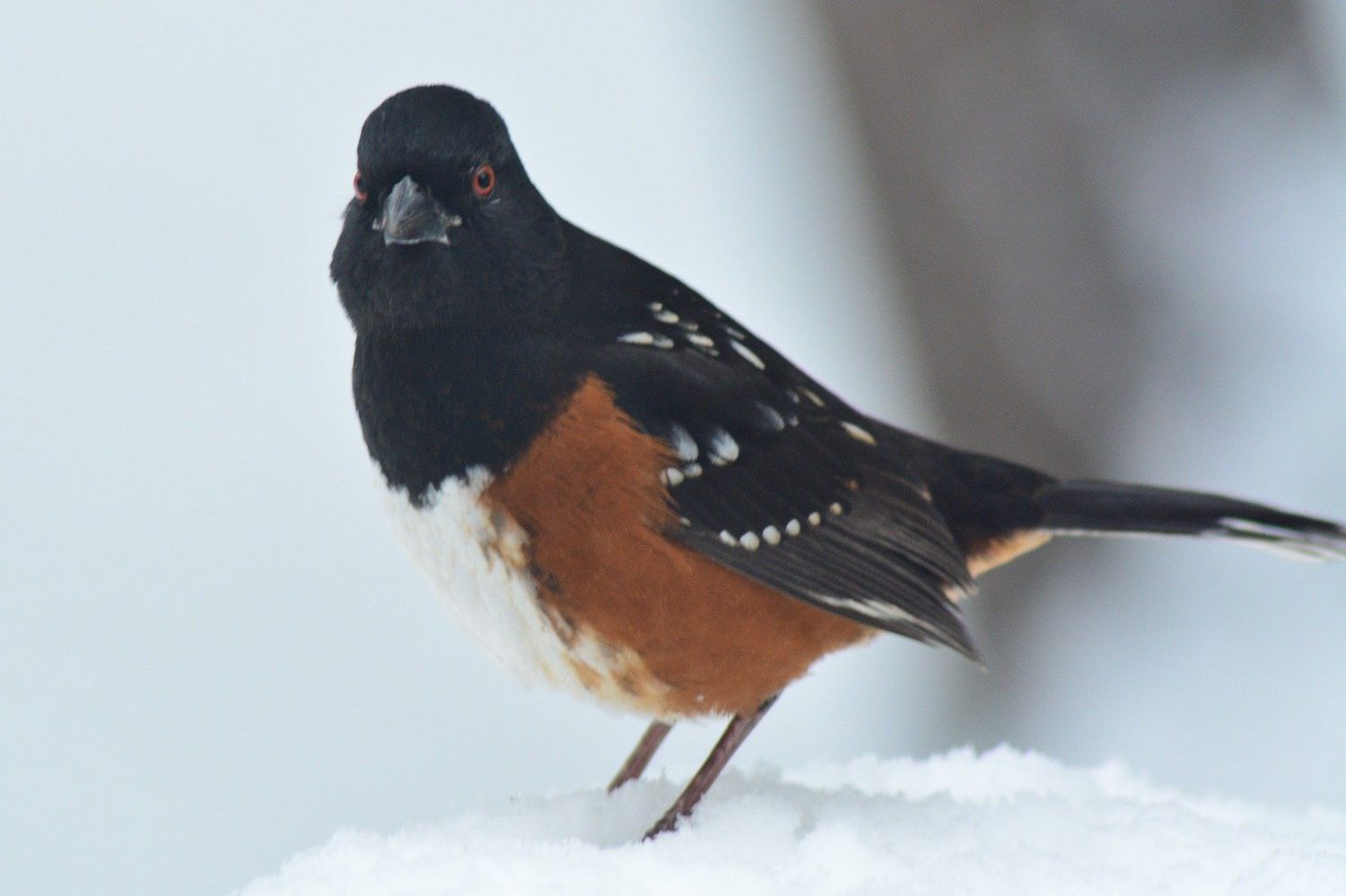
Spotted Towhees can be spotted in Utah all year, and they appear in 13% of summer and winter checklists for the state.
Spotted Towhees are large sparrows that are black on the head, throat, and back in the males and brown in the females. Both males and females have reddish-brown sides and white bellies, with white spots on their wings and back and long tails.
- Pipilo maculatus
- Length: 6.7-8.3 in (17-21 cm)
- Weight: 1.2-1.7 oz (33-49 g)
- Wingspan: 11.0 in (28 cm)
Spotted Towhees live in western US states, but those inland in the north migrate south to Texas after breeding.
Spotted Towhees can be found on the ground in dense tangles of shrubs scratching around for insects, including beetles, crickets, grasshoppers, caterpillars, wasps, and bees. They also eat acorns, berries, and seeds.
Spotted Towhee sounds: Songs are short notes followed by fast trills.
Nests of Spotted Towhees are usually on or near the ground and made from leaves, stems, and bark lined with softer material. They lay up to six eggs, which take around two weeks to hatch and a further ten days for the young to fledge.
Attract Spotted Towhees to your yard if you leave overgrown borders, and they will visit platform feeders or ground feeders for Black Oil Sunflower seeds, Hulled Sunflower seeds, Cracked Corn, Millet, and Milo.
Fun fact: Spotted Towhee males spend most of their mornings singing when trying to attract a mate.
Abert’s Towhee
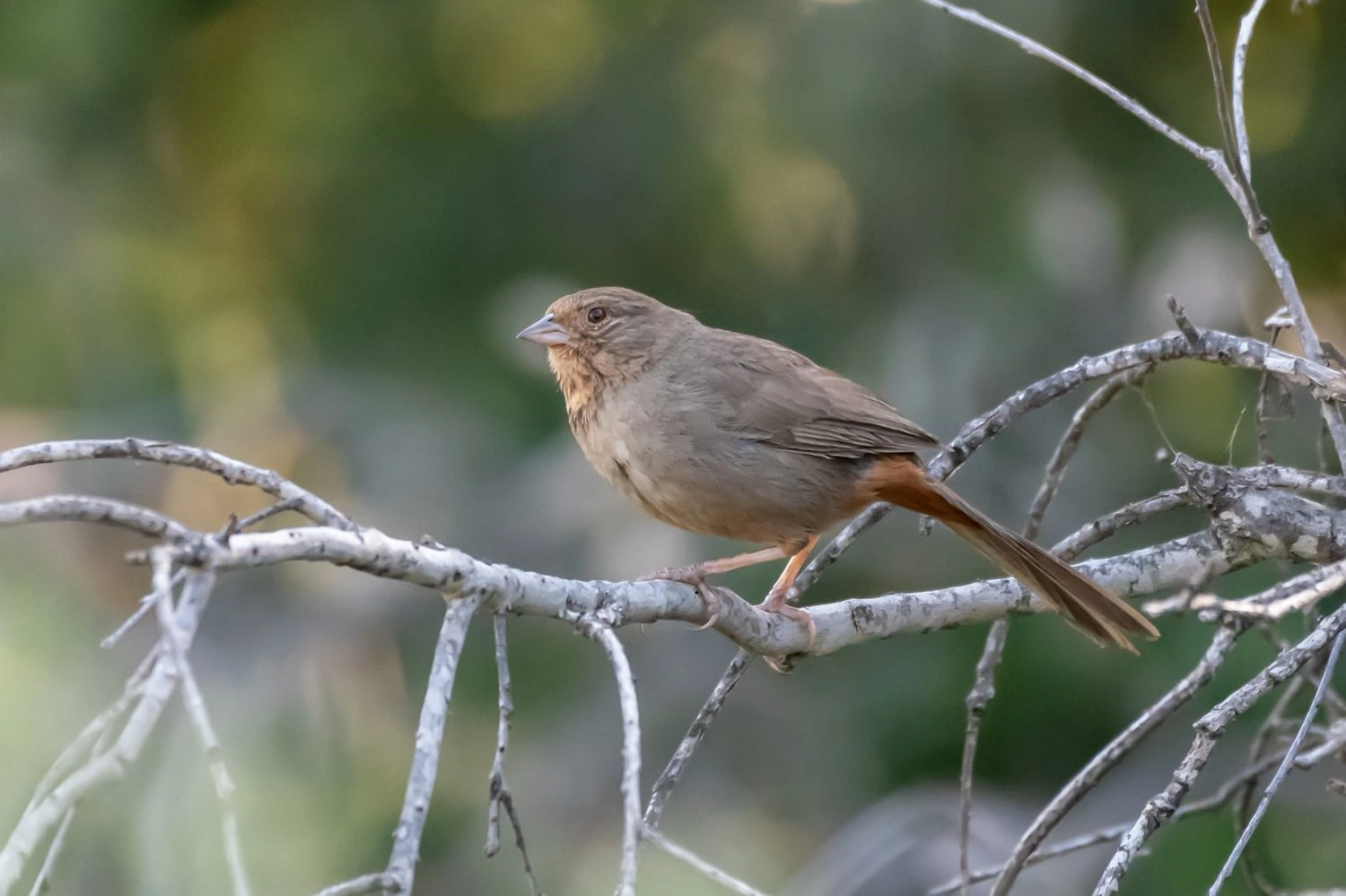
Abert’s Towhees do not migrate, and although they are not very common, they can be spotted in southwest Utah all year.
Abert’s Towhees are large grayish-brown sparrows, about the size of a robin, with rusty colors under their tail.
- Melozone aberti
- Length: 8.3-9.1 in (21.2-23.1 cm)
- Weight: 1.5-1.9 oz (42.5-54.9 g)
- Wingspan: 10.4-11.6 in (26.5-29.5 cm)
They are found on the ground in dry habitats in dense undergrowth by desert streams and riverbeds in a very small area predominantly in southwestern Arizona.
Abert’s Towhees forage for insects such as beetles, ants, caterpillars, cicadas, and grasshoppers. They will also eat some seeds, especially grasses, in winter.
Abert’s Towhees sounds: Male Abert’s Towhees’ song often starts with a few short notes and then speeds up.
Nests of Abert’s Towhees are built in dense vegetation about five feet above the ground. The nest is made from leaves and bark, and grass.
They lay up to four eggs, and these take around two weeks to hatch and a further two weeks for the young to leave the nest. After that, however, the parents look after the young for another month.
Attract Abert’s Towhees to your yard by adding a water feature such as a birdbath and adding native plants. They will also visit ground feeders for seed.
Fun fact: Abert’s Towhees have one of the smallest ranges of any bird in North America.
Rufous-crowned Sparrow
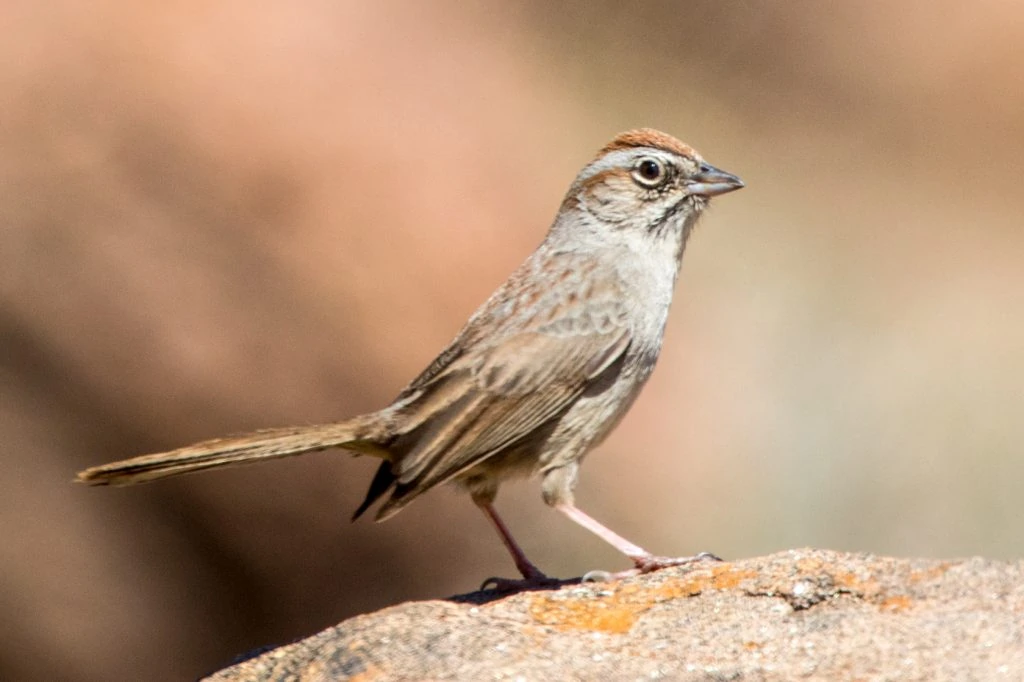
Rufous-crowned Sparrows are extremely rare to spot in Utah, but they do not migrate and can be spotted in the southern borders of the state all year.
Rufous-crowned Sparrows are large sparrows that are gray underneath and streaked brown on the back. They have reddish-brown crowns and white and dark stripes on their faces.
- Aimophila ruficeps
- Length: 5.9-6.3 in (15-16 cm)
- Weight: 0.6-0.7 oz (16-21 g)
Rufous-crowned Sparrows are resident all year in southwestern US states.
You can find Rufous-crowned Sparrows on the ground in dry, rocky hillsides that have vegetation for them to hide. In spring, when males are singing, is the best time to spot them.
They eat insects in spring and summer and fallen seeds and other plant material in winter.
Rufous-crowned Sparrow sounds:
Nests of Rufous-crowned Sparrows are on the ground, hidden in vegetation, and built by females from dried grass and some twigs. They lay up to five eggs which take around two weeks to hatch and a further nine days for the young to leave the nest.
Fun Fact: Rufous-crowned Sparrows distract predators from nests by pretending to have a broken wing or by pretending to fall from a branch.
Sparrows in Utah in Summer
Chipping Sparrow
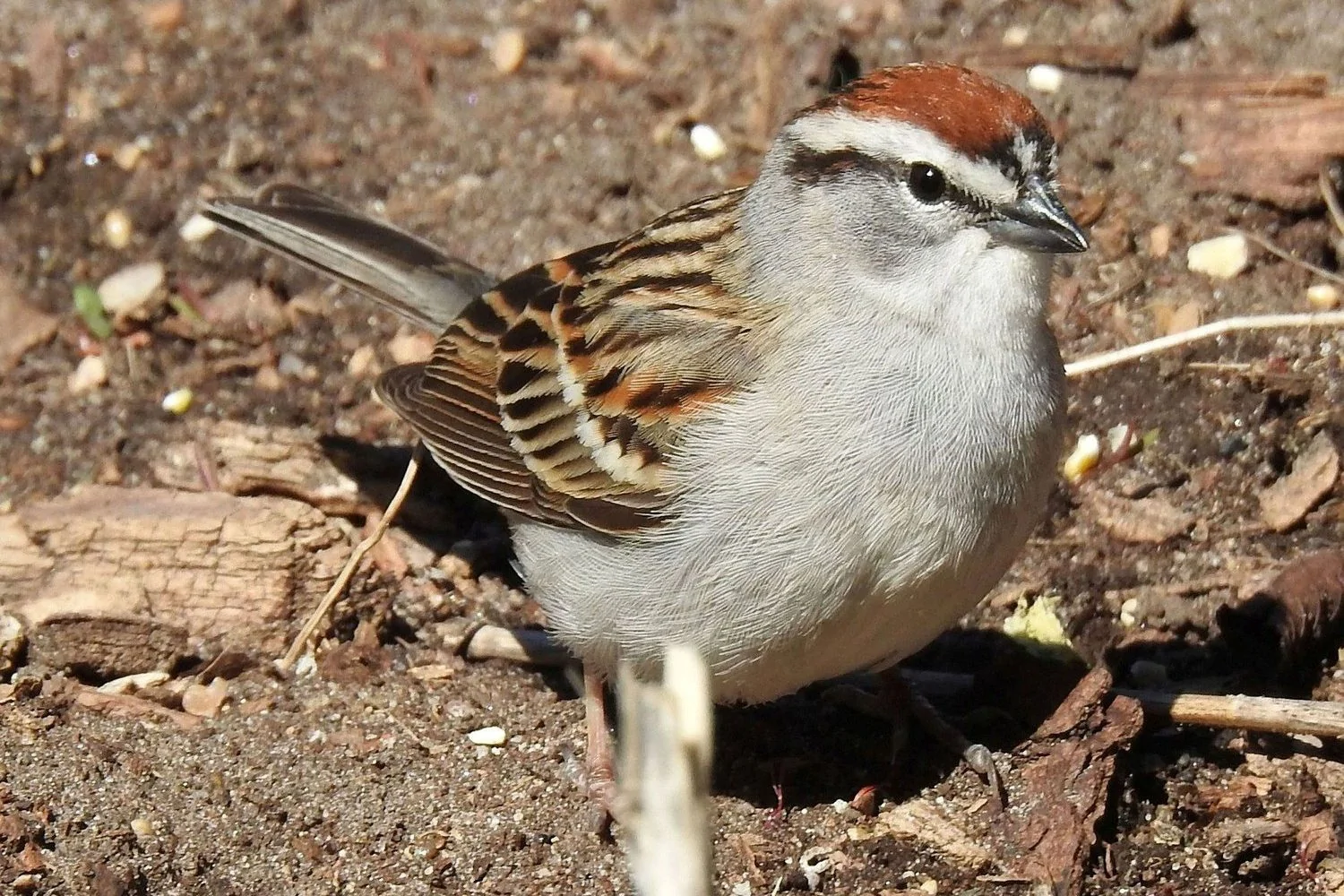
Chipping Sparrows spend the breeding season in Utah and are mainly spotted from April to October. They are recorded in 15% of summer checklists.
Chipping Sparrows are slender, long-tailed birds with a grayish belly and brown and black-streaked back, with a rusty crown and black eye line. In winter, the colors are more subdued.
- Spizella passerina
- Length: 4.7-5.9 in (12-15 cm)
- Weight: 0.4-0.6 oz (11-16 g)
- Wingspan: 8.3 in (21 cm)
Chipping Sparrows spend their summer breeding in the US and Canada before flying to Mexico and Florida for winter. Some remain all year in the southern US states.
You can find Chipping Sparrows in small flocks on the ground, often in woods and parks with trees.
Chipping Sparrow sounds: They get their name from the sharp ‘chip’ call they make. Their distinctive song is a stuttering trill.
Nests of Chipping Sparrows are off the ground, hidden in trees or shrubs, and are built by females. The nests are made from dried grass and small roots, but they are very basic and not very dense.
Chipping Sparrows lay up to seven eggs and up to three broods a year. The eggs take around two weeks to hatch, and the young fledge in under two weeks.
Attract Chipping Sparrows to your backyard with seeds or cracked corn on open feeders such as hoppers or platforms.
Fun fact: A group of Chipping Sparrows is known as a tournament.
Lark Sparrow
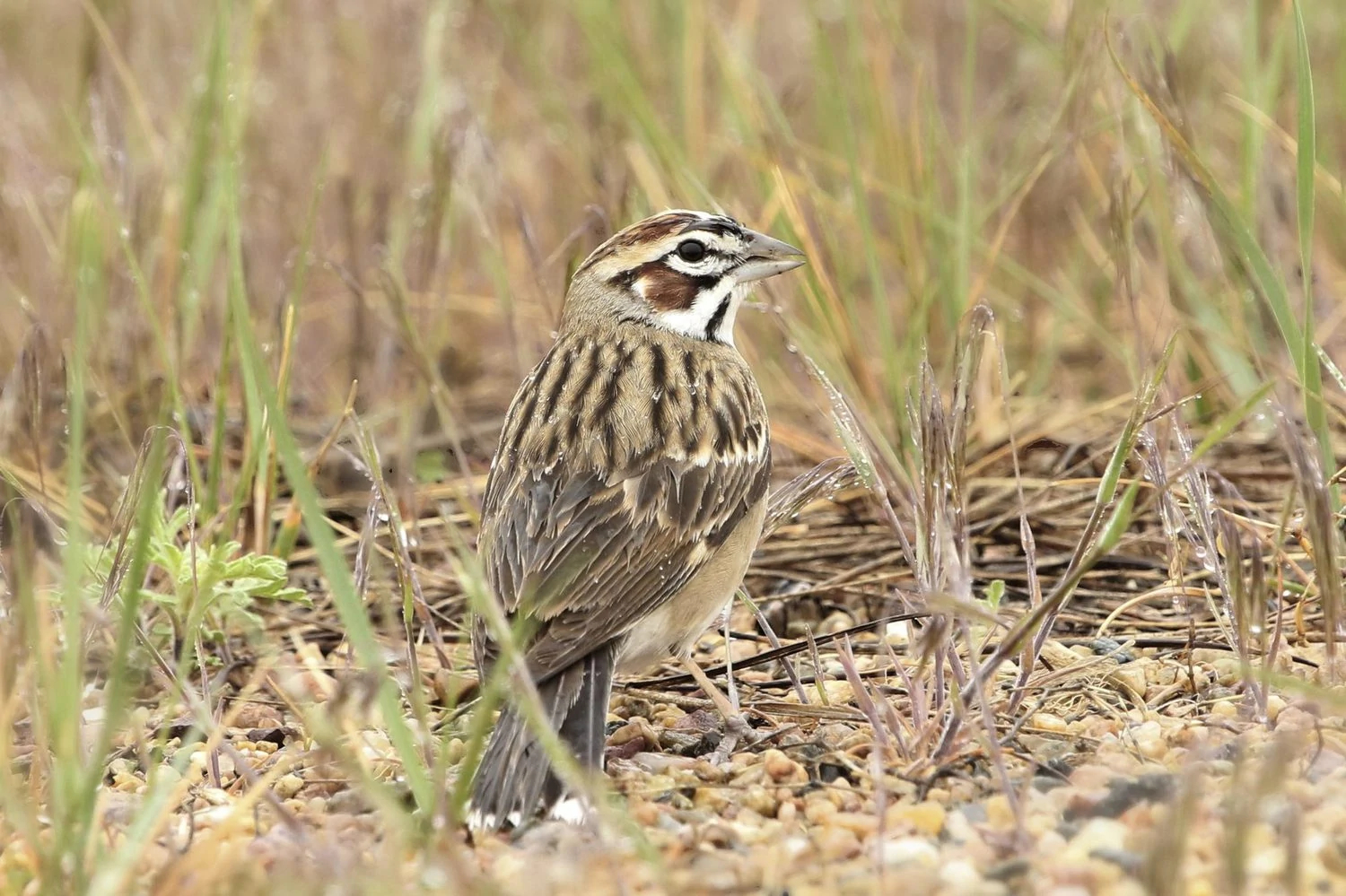
Lark Sparrows spend the breeding season in Utah and are recorded in 7% of summer checklists. They start arriving as early as March, and some stay until November, but May until September are the best months to spot them.
The small Lark Sparrow has highly-distinctive features. It has a brown and white striped crown, brown-streaked back, white belly, and brown, white-edged tail.
- Chondestes grammacus
- Length: 5.9-6.7 in (15-17 cm)
- Weight: 0.8-1.2 oz (24-33 g)
- Wingspan: 11.0 in (28 cm)
Lark Sparrows breed in most US states, except towards the east. They also breed in some southern Canadian Provinces. Winter is spent in Mexico, but birds along the Pacific Coast, mainly in California and some southern states, remain all year.
You can find Lark Sparrows on the bare, open ground like grasslands, but they also favor trees and pastures with a few scattered shrubs.
Lark Sparrows will feast on many insects like grasshoppers, caterpillars, and beetles in summer and mostly seeds, grasses, and weeds during the winter.
Lark Sparrow sounds: The males’ song is a happy series of whistles, buzzes, and churr sounds.
Nests of Lark Sparrows are built by both males and females. The male will place twigs at the site, but females will do the actual construction. The nests can be on the ground, in low trees, and even in crevices in rocky cliffs.
The female creates an open cup made with grass, weeds, animal hair, and twigs. There are up to six eggs in a nest, and they take around twelve days to hatch and an additional ten days for the young to leave the nest.
Attract Lark Sparrows to your backyard with their favorite food, seeds.
Fun fact: Male Lark Sparrows take 5 minutes to dance during their courting ritual.
Green-tailed Towhee
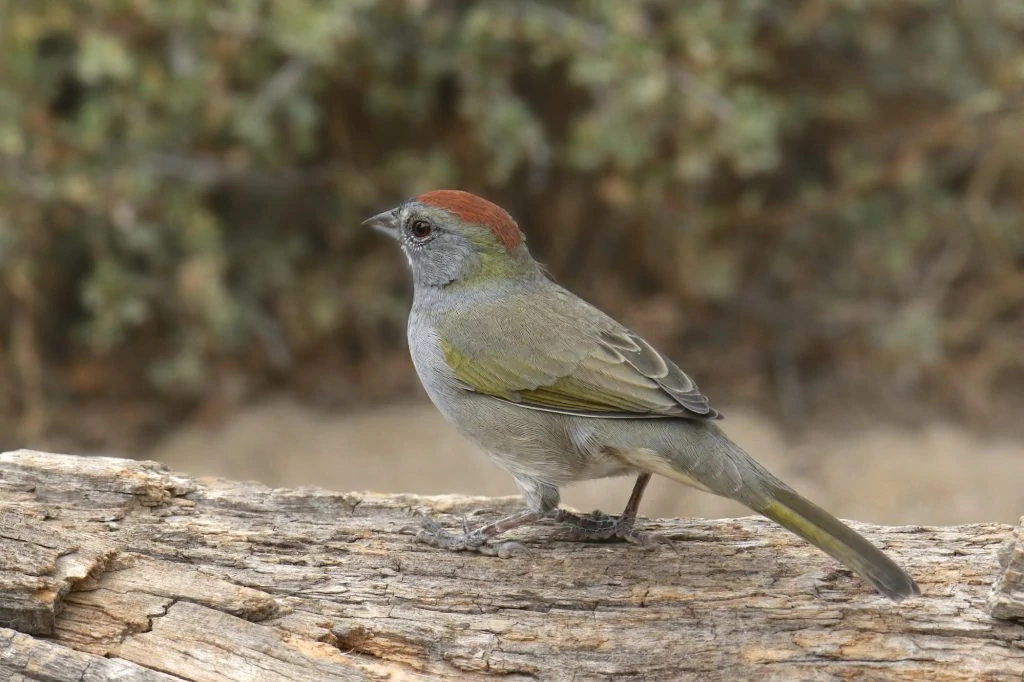
Green-tailed Towhees are more frequently spotted during the breeding season in Utah and are recorded in 7% of summer checklists, mainly from mid-April to September.
Green-tailed Towhees are large sparrows but small for towhees. They are gray with olive-green wings, backs, and tails, and they have a red crown.
- Pipilo chlorurus
- Length: 7.25 in (18.4 cm)
- Weight: 0.8-1.4 oz (21.5-39.4 g)
Green-tailed Towhees breed in western US states and migrate to southwestern US states and Mexico for winter. They are common in the mountainous west in summer.
You can find Green-tailed Towhees on the ground in dense shrubby vegetation in summer and desert grasslands and thickets, often near streams, in winter. They eat seeds, insects, and berries.
Green-tailed Towhee sounds: Their song is a pleasant series of whistles and slight buzzing.
Nests of Green-tailed Towhees are low in dense vegetation and are built by females from twigs, bark, and other plant material and lined with soft grass and animal hair.
They lay up to five eggs which take just under two weeks to hatch and around a further two weeks for the young to leave the nest.
Fun fact: Female Green-tailed Towhees distract potential predators by quietly leaving the nest and then running around with their tails raised near the nest predator.
Brewer’s Sparrow
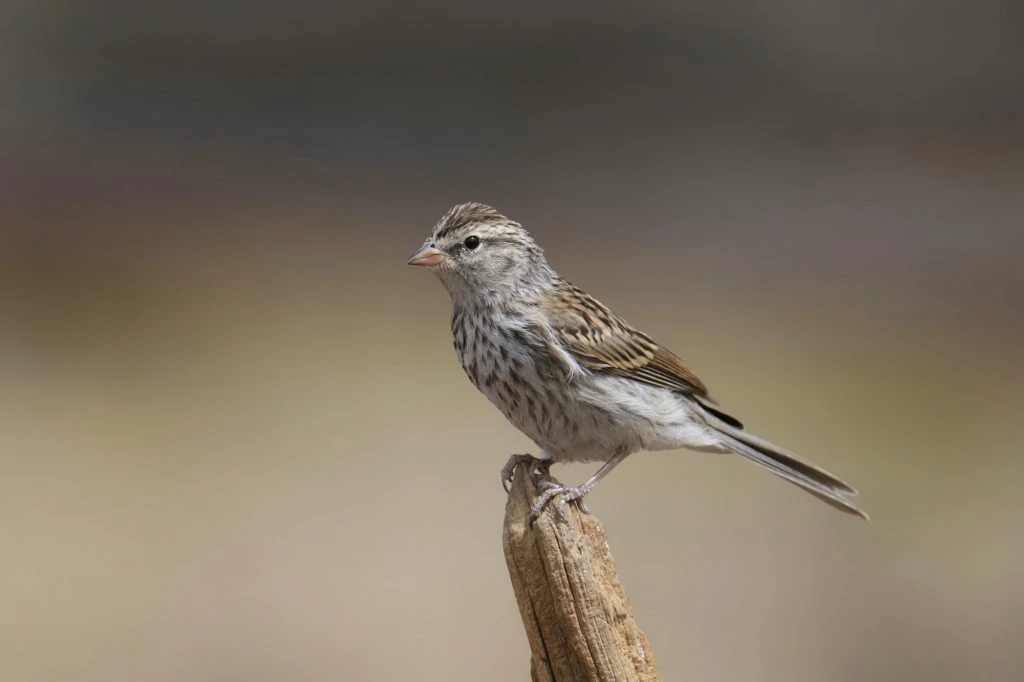
Brewer’s Sparrows are spotted in Utah from April to September and appear in 4% of summer checklists. However, their numbers increase during the fall migration in October and occur in 11% of checklists at this time.
Brewer’s Sparrows are gray underneath and streaked brown on their backs. They have long tails with a notch at the end and small bills. Brewer’s Sparrows are the smallest sparrow in North America.
- Spizella breweri
- Length: 5.1-5.9 in (13-15 cm)
- Weight: 0.4-0.5 oz (11-14 g)
- Wingspan: 7.1-7.9 in (18-20 cm)
Brewer’s Sparrows breed in western US states and western Canada and migrate south for winter to southwestern US states and Mexico. They are very common sparrows in their range.
You can find Brewer’s Sparrows in arid sagebrush foraging for insects, such as caterpillars, grasshoppers, and spiders. In winter, they will also eat seeds.
Brewer’s Sparrow sounds: Their song is a buzzing sound that often descends and slows down.
Nests of Brewer’s Sparrows are built by females in shrubs from dry grass. They lay up to five eggs which take around eleven days to hatch and around a further eight days for the young to leave the nest.
Fun fact: Brewer’s Sparrows are small but mighty, and they will mob and chase predators away from their nests.
Savannah Sparrow
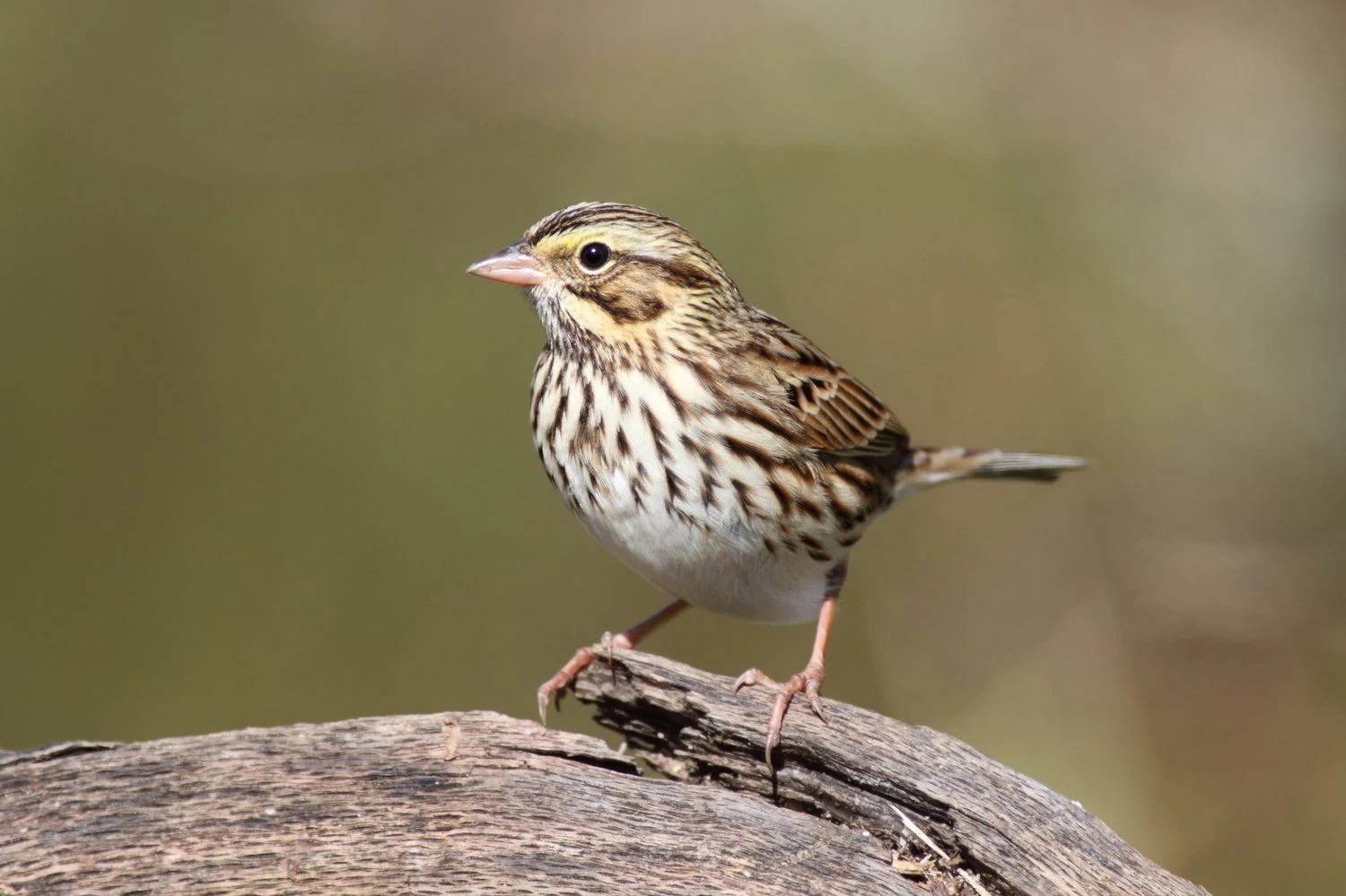
Savannah Sparrows spend the breeding season in Utah and are spotted from March until October. They occur in 3% of summer checklists.
If you get close enough to a Savannah Sparrow, you will see this brown bird has a distinctive yellow patch by the eye. They also have short tails and a streaky brown coloring.
- Passerculus sandwichensis
- Length: 4.3-5.9 in (11-15 cm)
- Weight: 0.5-1.0 oz (15-28 g)
- Wingspan: 7.9-8.7 in (20-22 cm)
Savannah Sparrows breed in Canada and the US before migrating to southern US states and Mexico for winter.
You can find Savannah Sparrows on the ground in open areas, such as grassland, foraging for insects and spiders in the breeding season, and seeds in the winter.
Savannah Sparrow sounds: An almost rushed sounding song which is a few fast notes followed by a buzzing trill.
Nests of Savannah Sparrows are on or near the ground and made from grass. They lay up to six eggs, which take around two weeks to hatch and a further one or two weeks for the young to fledge.
These birds do not regularly visit feeders, but they may visit your yard if you keep brush piles, have long grass, and live near fields.
Fun fact: Although they are one of the most common songbirds in North America, they are considered a threatened species by the ICUN.
Vesper Sparrow
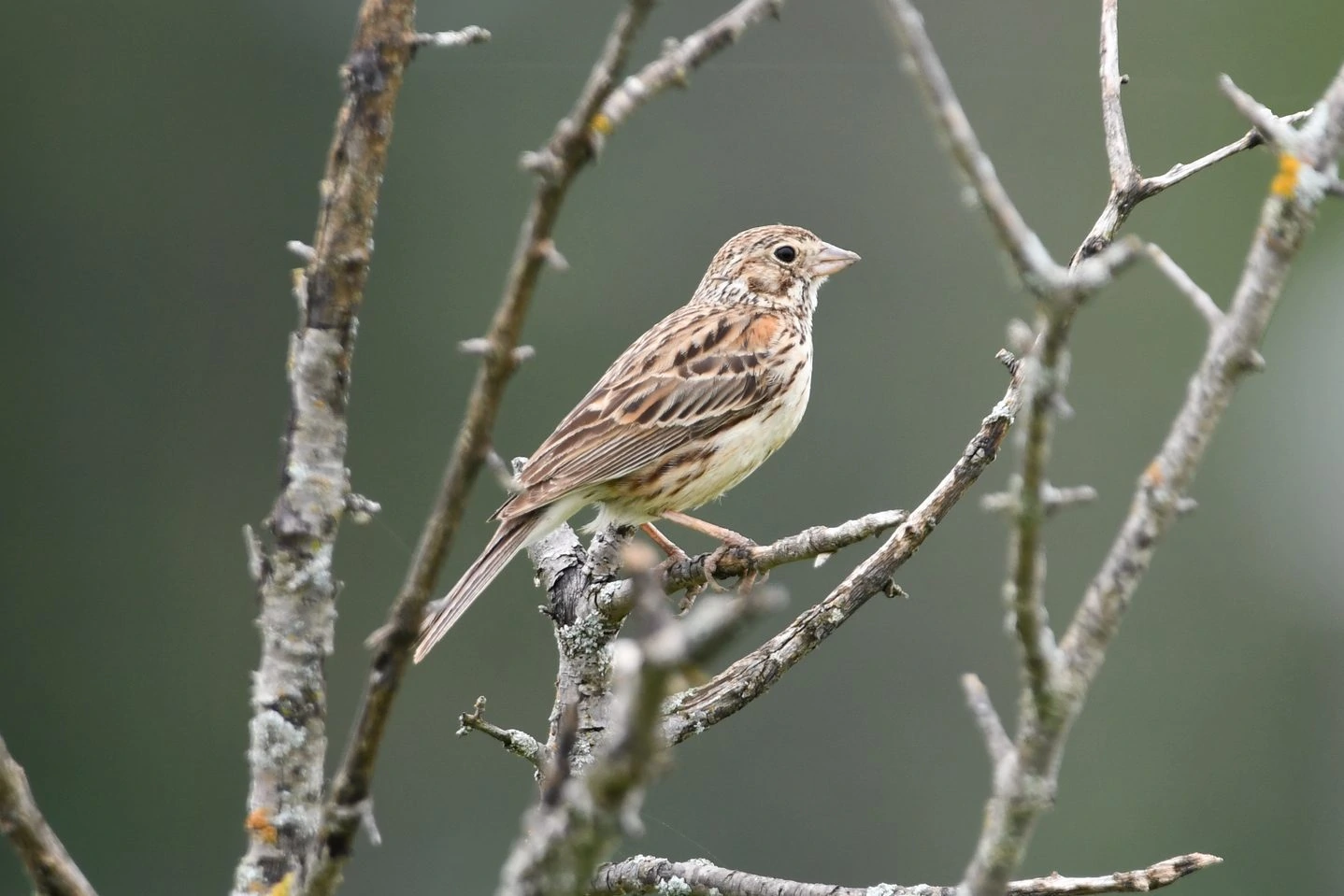
Vesper Sparrows are spotted in Utah during the breeding season and appear in 3% of summer checklists. However, they are most common during the fall migration in September and occur in 8% of checklists at this time.
Vesper Sparrows are quite large sparrows that are mostly brown on the back, with white streaks and white bellies.
- Pooecetes gramineus
- Length: 5.1-6.3 in (13-16 cm)
- Weight: 0.7-1.0 oz (20-28 g)
- Wingspan: 9.4 in (24 cm)
Vesper Sparrows spend the summer breeding in the northern half of the US, southern Canada, and down into southwestern US states. Then, they migrate to southern US states and Mexico for winter.
You can find Vesper Sparrows on the ground in open grasslands and weedy fields and meadows. They eat seeds of grasses and weeds and some insects and spiders.
Vesper Sparrow sounds: Males start with a few low whistles followed by a series of rising and falling trills.
Nests of Vesper Sparrows are on the ground and made from grass, bark, and moss. They lay up to six eggs which take up to two weeks to hatch and a further one or two weeks for the young to leave the nest.
Fun fact: Male Vesper Sparrows run after females with their wings raised, leaping into the air and singing to attract their attention.
Black-throated Sparrow
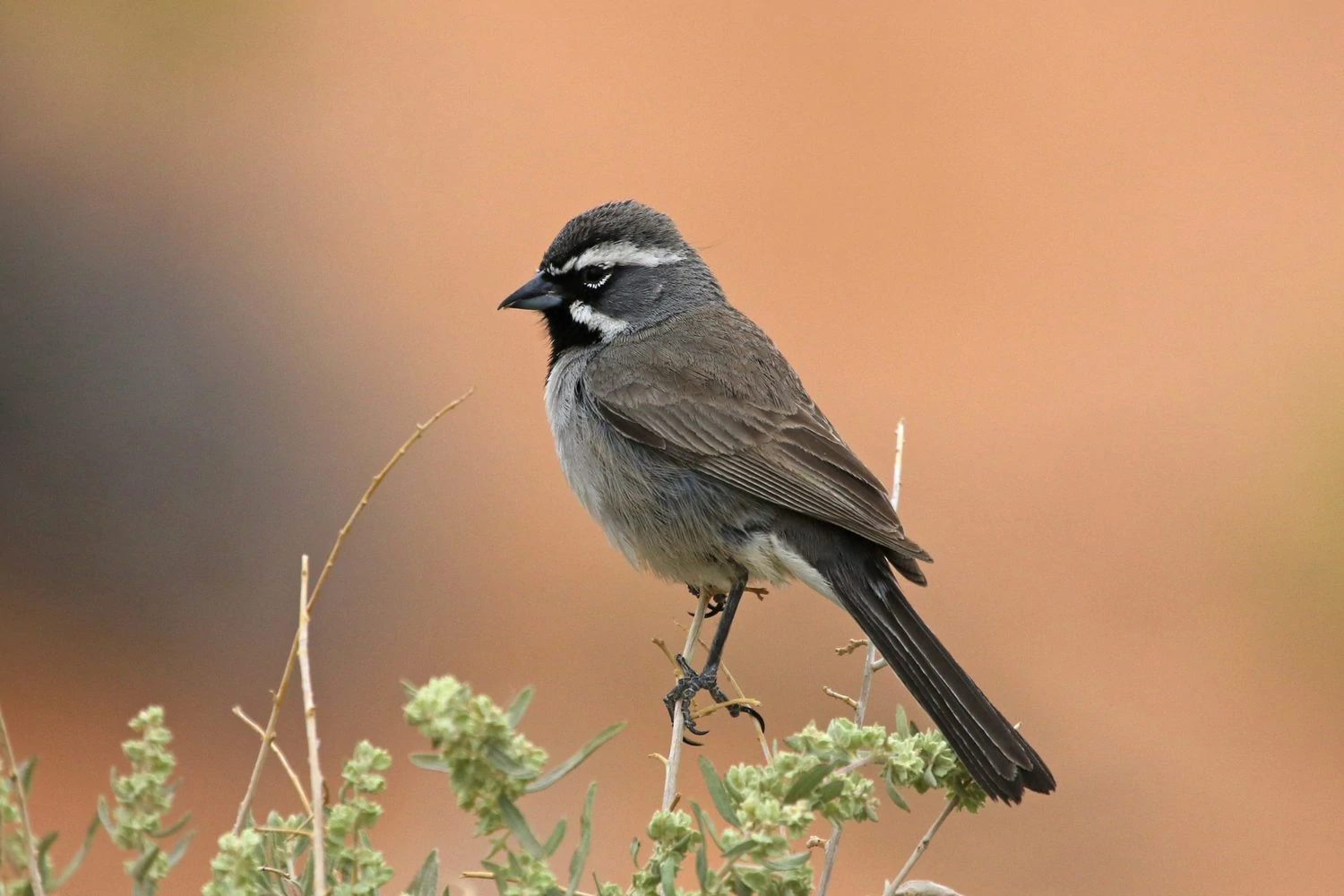
Black-throated Sparrows appear in 4% of summer checklists in Utah and can be spotted here from March to September.
Black-throated Sparrows are one of the most easily recognized sparrows with their distinctive black throat and two bright white stripes on each side of their gray heads. The rest of them is pale underneath and grayish-brown on the back.
- Amphispiza bilineata
- Length: 4.7-5.5 in (12-14 cm)
- Weight: 0.4-0.5 oz (11-15 g)
- Wingspan: 7.7 in (19.5 cm)
Black-throated Sparrows are sparrows of southwestern US states. Those that breed further north in their range migrate, but those in the south and Mexico remain all year.
You can find Black-throated Sparrows on the ground in open areas in canyons and desert scrub. They eat insects in summer and fallen seeds in winter.
Black-throated Sparrow sounds: The males’ song is a mix of some low notes, followed by a buzz and then a trill. The song is quite distinctive once you hear it a few times.
Nests of Black-throated Sparrows are low down in shrubs and made from desert plant material made into a cup shape and lined with soft grass and animal hair.
They lay up to five eggs, which take up to two weeks to hatch and a further ten days for the young to leave the nest.
Attract Black-throated Sparrows to your backyard with black oil sunflower seeds.
Fun fact: Black-throated Sparrows do not drink water during the hot desert summer and instead get all their moisture from the insects they eat.
Fox Sparrow
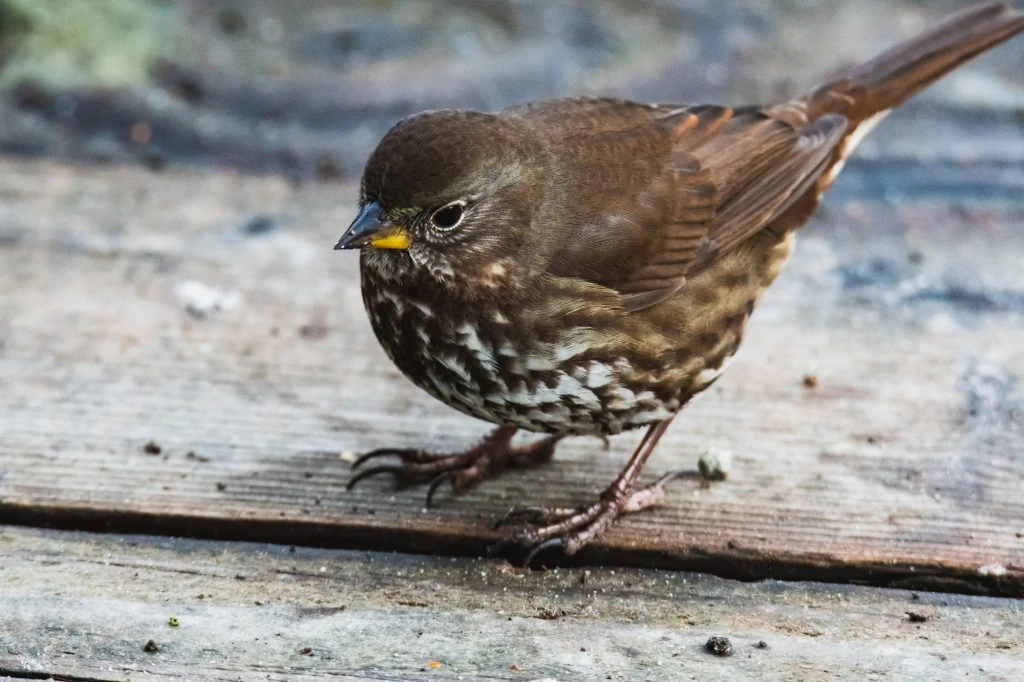
Fox Sparrows are not very common in Utah, but they spend the breeding season here, mainly in the north of the state from April until mid-September.
Although some species are more gray or dark brown, the Fox Sparrow is aptly named after its fox-red coloring. Its reddish streaks are particularly obvious in its chest area. It is a chunky bird compared to other sparrows.
There are four different color and appearance variations in Fox Sparrows. Red Fox Sparrows are found in eastern areas, and darker ‘sooty’ Fox Sparrows are found along the Pacific Coast. Thick-billed Fox Sparrows are found in California, and Slate-colored Fox Sparrows are found in western US states.
- Passerella iliaca
- Length: 5.9-7.5 in (15-19 cm)
- Weight: 0.9-1.6 oz (26-44 g)
- Wingspan: 10.5-11.4 in (26.7-29 cm)
Fox Sparrows migrate and breed in the north and west of Canada, Alaska, and down as far as California in the western US.
They spend the winter in southeastern US states and along the Pacific coast. Some remain all year on Canada’s Pacific coast, and they can be seen during migration in central and northeastern US states.
You can find Fox Sparrows in wooded areas, undergrowth, and brush. In the winter, they migrate to similar areas, even in well-vegetated suburbs and parks. You may observe them kicking up leaf litter in the air in search of food on the ground.
Insects and seeds are a common diet of Fox Sparrows. At times, they may also eat berries and grasses and crustaceans and marine animals if they’re near the beach.
Fox Sparrow sounds: Males sing a pleasant series of whistles and buzzy notes.
Nests of Fox Sparrow are hidden under dense, low shrubs. They may also build them in low trees but not more than eight feet above the ground. The nest is covered with grass, weeds, and moss but lined with dry grass. For those above ground, twigs are used to toughen up the nest’s walls.
They lay two to five eggs, which take about two weeks to hatch. The young may leave the nest within eleven days of hatching.
Attract Fox Sparrows to your backyard with small seeds and berries and low native shrubs.
Fun fact: The female Fox Sparrow can build a nest in a flash. They can start a nest at sunrise and finish it by dusk!
Sagebrush Sparrow
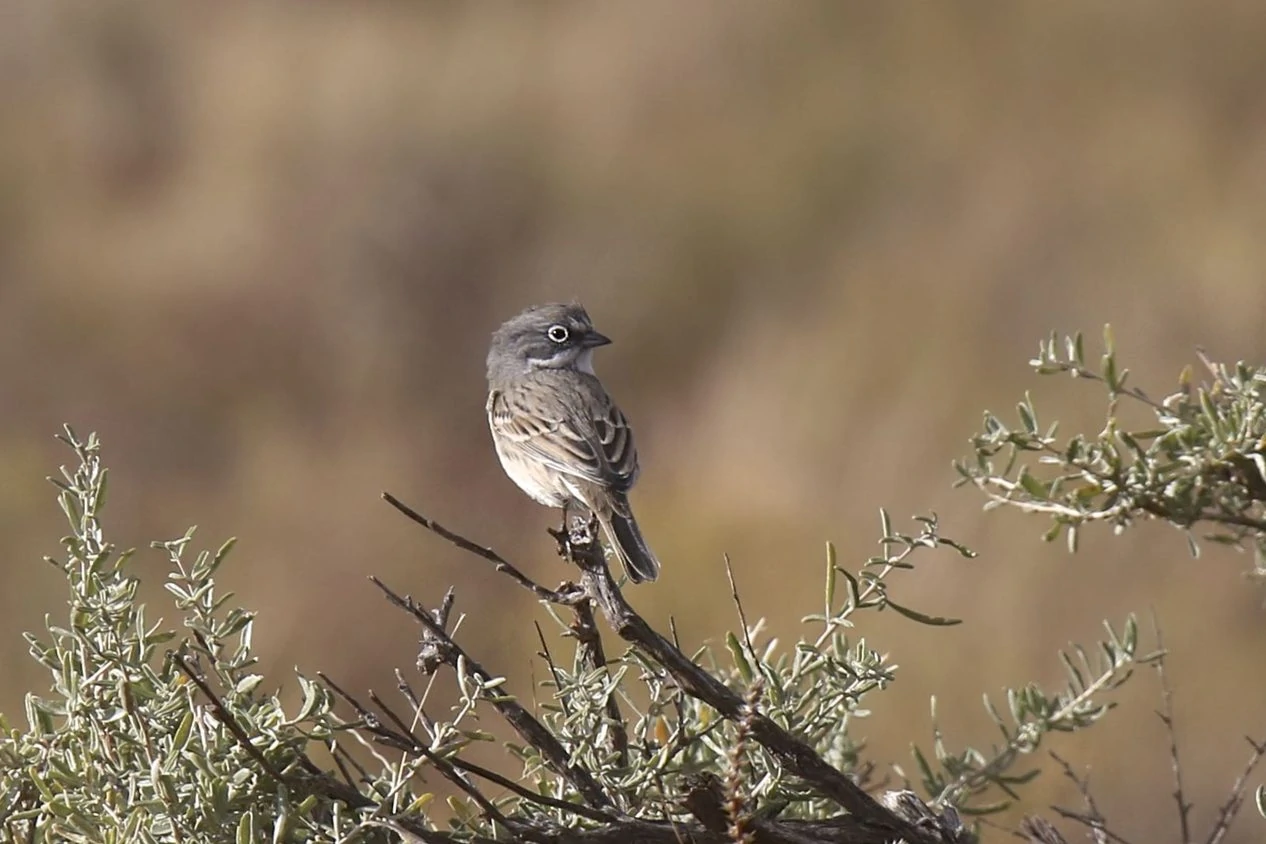
Sagebrush Sparrows are not often seen in Utah, but they are recognized as regularly occurring here, and although a few remain all year, they are more common during summer.
Sagebrush Sparrows are medium-sized birds that are easier to recognize than other sparrows. Their head is gray with a white patch in front of their eyes. Their back has streaks of dark brown, and they have a dark-gray stripe on their throats. Their chests and bellies are white with a dark spot in the center.
- Artemisiospiza nevadensis
- Length: 16 cm (6.25 in)
- Weight: 20 g (0.7 oz)
- Wingspan: 21 cm. (8.25 in)
Sagebrush Sparrows are found inland in western US states. They breed in more northern areas and migrate south for winter. Some may remain all year in the middle of their range.
You can find Sagebrush Sparrows among undisturbed sagebrush and other shrubs. In winter, they migrate to brushy saltbush lands and other desert-like areas.
During the summer, Sagebrush Sparrows eat plenty of spiders and insects like ants, grasshoppers, and beetles. They also feed on seeds of grasses and weeds.
Sagebrush Sparrows song:
Nests of Sagebrush Sparrows are found within sagebrush or saltbush. They are built low to the ground and made out of twigs and sticks and lined with grass and weeds. Females lay three to four eggs that hatch within sixteen days. The young leave their nest around eleven days after hatching.
Fun Fact: Sagebrush Sparrows will return to their successful “tried and tested” breeding sites every year.
Black-chinned Sparrow
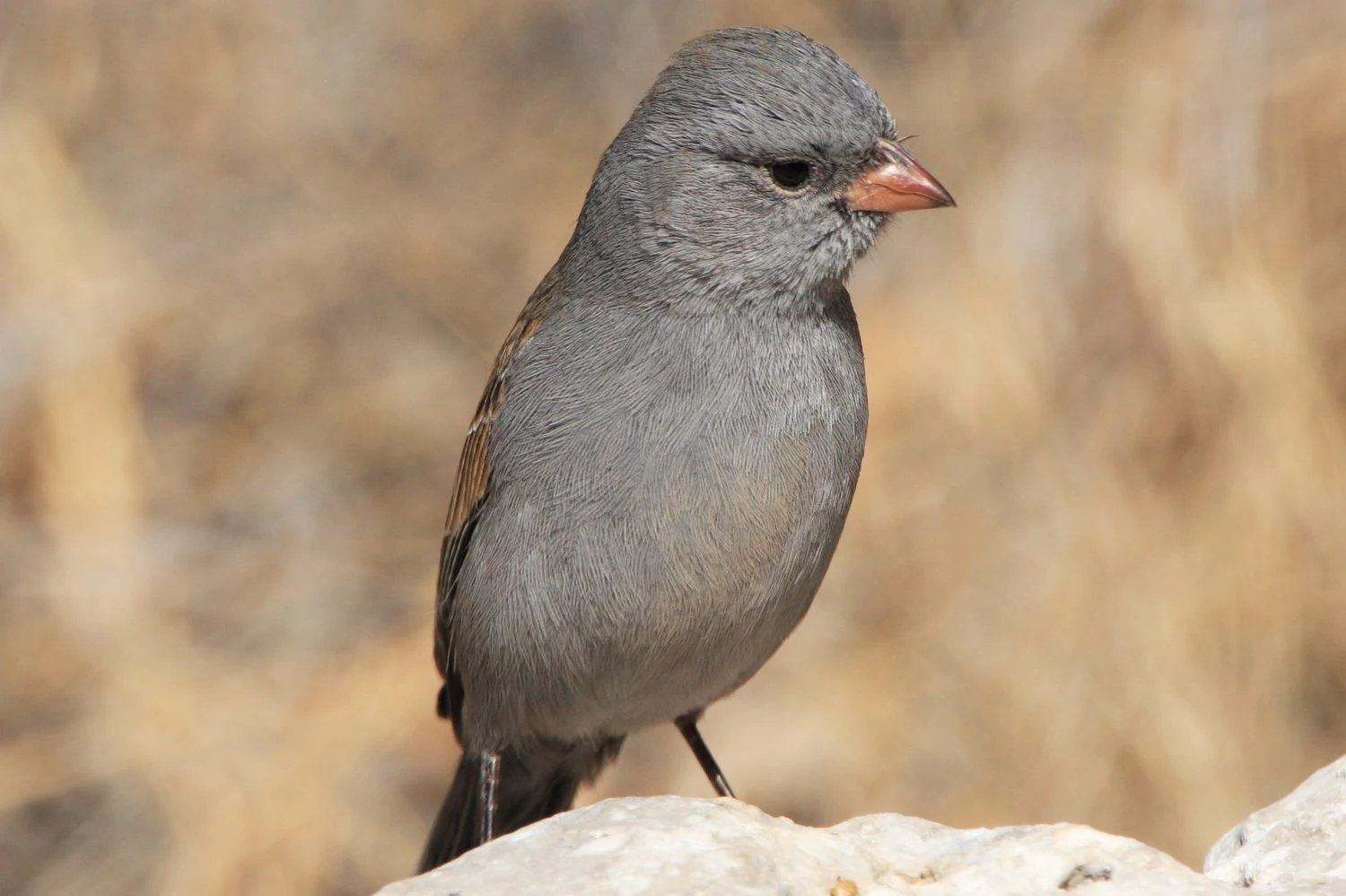
Black-chinned Sparrows are rarely seen in Utah, but they spend summer in the state from March to September.
Black-chinned Sparrows are plain and mainly gray overall but with brown backs and wings. Males have the black patch on their throat, but the females and non-breeding males don’t. Their bills are pink, which contrasts with their gray heads, and makes them easier to spot.
- Spizella atrogularis
- Length: 15 cm (5.75 in)
- Weight: 11 g (0.4 oz)
- Wingspan: 23 cm (9 in)
Black-chinned Sparrows breed in southwestern US states and migrate south to Mexico for winter.
You can find Black-chinned Sparrows in arid, desert-like environments. They prefer to live in remote and rocky areas with sagebrush, pine-juniper vegetation, and other brushes and scrubs. They may move south of their breeding locations in winter, usually to lower elevations.
Black-chinned Sparrows spend much of their time foraging for seeds on the ground and under shrubs. They feed on insects during the summer and more grains and seeds during the winter. They may capture insects while flying.
Black-chinned Sparrow song:
Nests of Black-chinned Sparrows are found near the ground and built within a dense shrub. They are made of grass, weeds, rootlets, and yucca fibers and made soft with hair and feathers. There may be as many as five eggs per nest, and they take about a week to hatch. It takes as long as fifteen days for them to learn how to fly, and in the meantime, their parents continue to care for them until they do.
Fun Fact: Black-chinned Sparrows are on the list of protected species by the Migratory Bird Treaty Act. Their habitat is endangered, and their nests are highly-susceptible to predation.
Grasshopper Sparrow
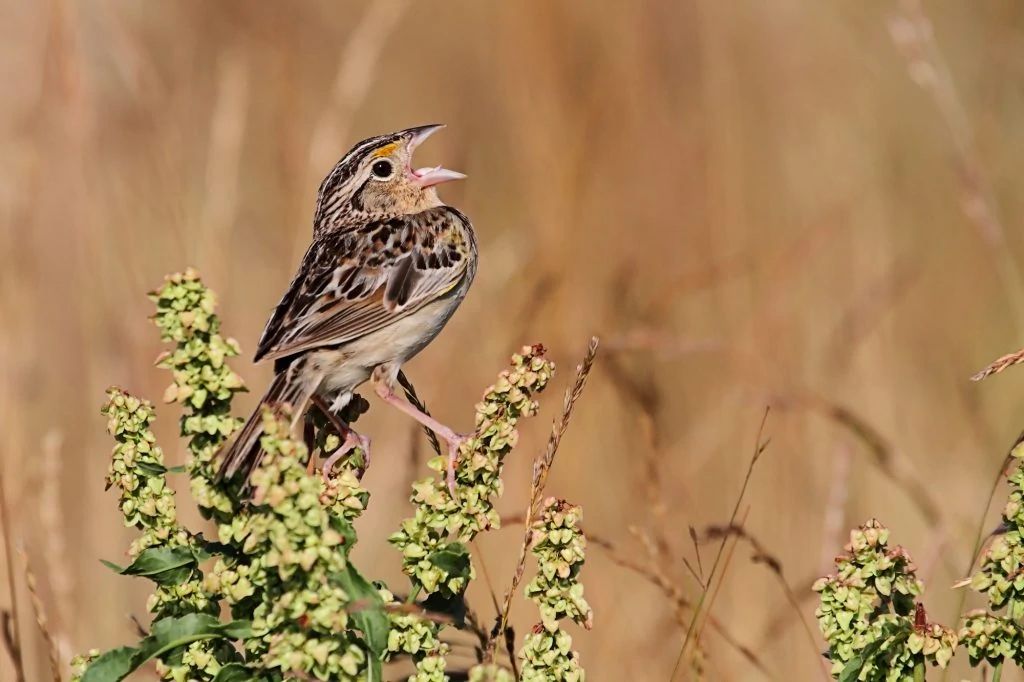
Grasshopper Sparrows are rare to find in Utah, but you might get lucky to spot them in the north of the state during May and June.
Grasshopper Sparrows are tiny birds with light and dark brown streaking and a distinctive orange or yellow stripe above their eye. They have short tails, large bills, and pale bellies.
- Ammodramus savannarum
- Length: 4.3-4.5 in (10.8-11.5 cm)
- Weight: 0.5-0.7 oz (14-20 g)
- Wingspan: 7.9 in (20 cm)
Grasshopper Sparrows breed in central and eastern US states, California’s coast, and parts of northwestern US states. They spend winter in southeastern US states, Mexico, and the Caribbean.
You can find Grasshopper Sparrows on the ground in grassland and prairies or other open areas hunting for grasshoppers and other insects and spiders. In winter, they mostly eat fallen seeds.
Grasshopper Sparrow sounds: The buzzy insect-like song of the Grasshopper Sparrow is how they get their name.
Nests of Grasshopper Sparrows are on the ground in vegetation. They are made out of grasses and plant material, and they create a roof by weaving surrounding stalks and creating an entrance on the side.
They lay up to seven eggs four times during the breeding season. The eggs take up to two weeks to hatch and a further week or so for the young to leave the nest.
Fun Fact: Grasshopper Sparrows violently shake their grasshopper prey to remove the large legs so that they can feed the bodies to their young.
Sparrows in Utah in Winter
Dark-eyed Junco
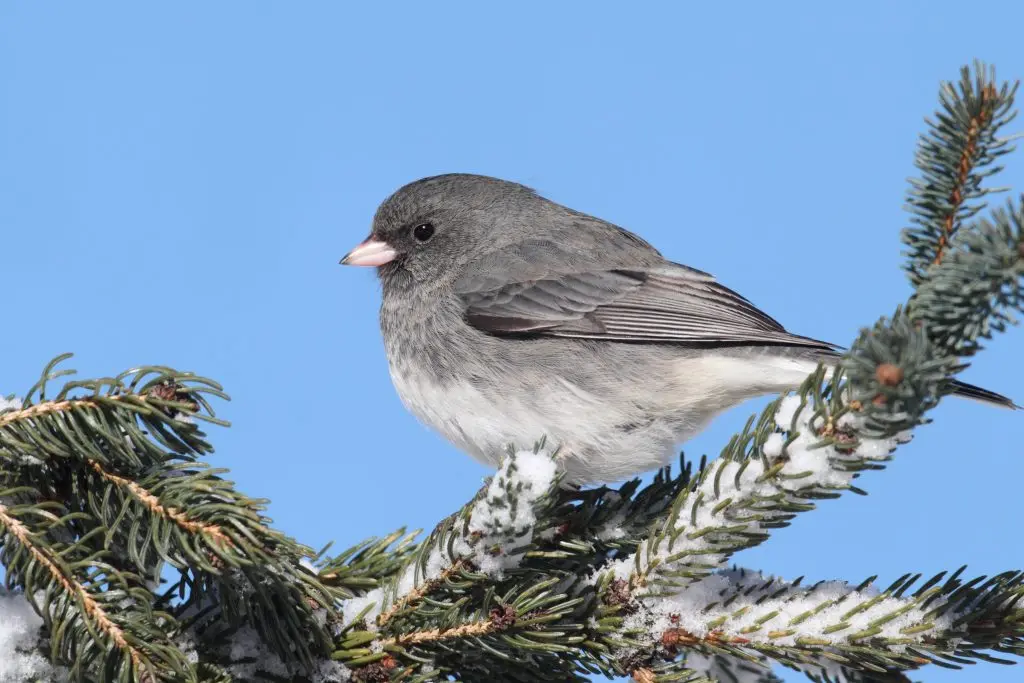
Dark-eyed Juncos are the most frequently spotted sparrows during winter in Utah and are recorded in a massive 43% of winter checklists submitted by bird watchers for the state.
They are more commonly spotted from October to March, but some can be spotted all year and occur in 8% of summer checklists.
Dark-eyed Juncos are sparrows that are different a color depending on the state. They are generally slate-colored in the east and black, white, and brown in the west.
- Junco hyemalis
- Length: 5.5-6.3 in (14-16 cm)
- Weight: 0.6-1.1 oz (18-30 g)
- Wingspan: 7.1-9.8 in (18-25 cm)
Dark-eyed Juncos remain resident all year in the northeastern and western US states and the Appalachian Mountains. Those that breed in Canada and Alaska migrate south in winter to the United States.
You can find Dark-eyed Junco in open and partially wooded areas, often on the ground, and they are common across the continent. They mainly feed on seeds but will also eat some insects.
Dark-eyed Junco sounds: A simple song of a series of fast, high-pitched even notes.
Nests of Dark-eyed Juncos are usually on the ground, hidden in vegetation, woven from plant material, and lined with grass and hair. They lay up to six eggs, which take around two weeks to hatch and two weeks to fledge.
Attract Dark-eyed Juncos to backyard feeders with a variety of seeds such as black oil sunflower seeds, nyjer, cracked corn, millet, and peanuts. Platform feeders or seeds scattered on the ground are best.
Fun fact: Dark-eyed Juncos are known as snowbirds as they arrive in the United States in winter.
White-crowned Sparrow
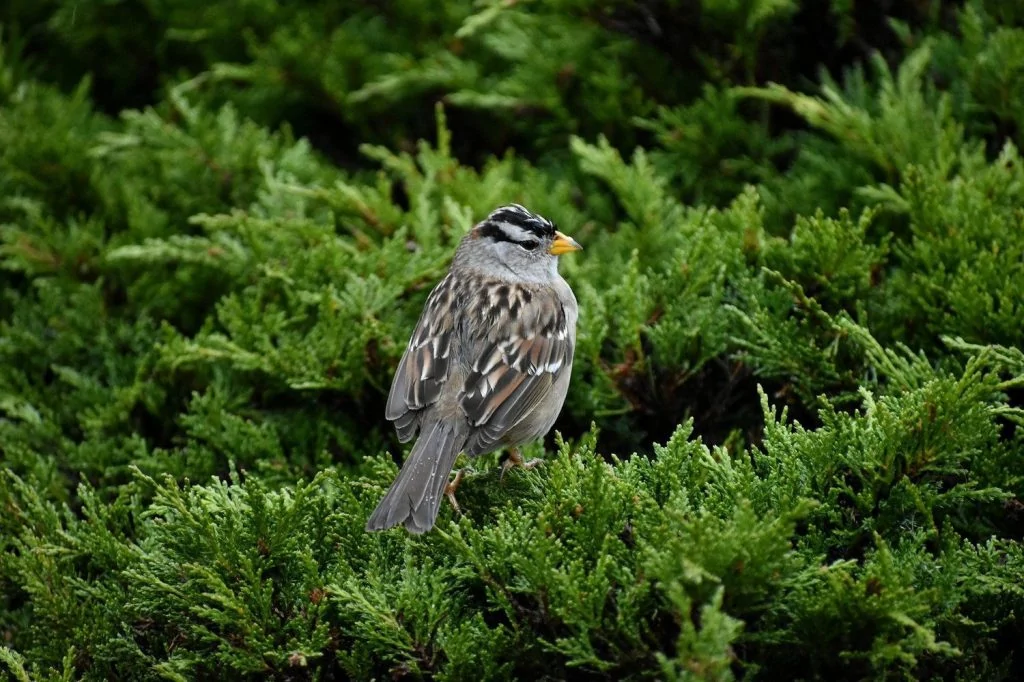
White-crowned Sparrows spend the winter in Utah. However, their numbers increase during the fall migrations from September to October. They are spotted in around 19% of checklists in winter but up to 36% during the migrations.
White-crowned Sparrows are large grayish sparrows with long tails, small bills, and bold black and white stripes on their heads.
- Zonotrichia leucophrys
- Length: 5.9-6.3 in (15-16 cm)
- Weight: 0.9-1.0 oz (25-28 g)
- Wingspan: 8.3-9.4 in (21-24 cm)
White-crowned Sparrows breed in Alaska and arctic Canada before heading south to the lower 48 and Mexico for winter. However, some may remain along the Pacific Coast and the mountainous west all year.
You can find White-crowned Sparrows in weedy fields, along roadsides, forest edges, and in yards foraging for seeds of weeds and grasses or fruit such as elderberries and blackberries.
White-crowned Sparrow sounds: The males’ song is a clear whistle, followed by a series of chaotic whistles and finishing with a buzz. Calls are usually short and sharp. Females rarely call or sing.
Nests of White-crowned Sparrows are made from twigs, grass, moss, and pine needles, often low to the ground in shrubs or on the ground in the tundra. They lay up to seven eggs, which take up to two weeks to hatch and around nine days for the chicks to fledge.
Attract White-crowned Sparrows to your backyard with sunflower seeds, and they will also eat seeds dropped by other birds at the feeders.
Fun fact: Young White-crowned Sparrows take a further week or two to learn to fly after leaving the nest.
American Tree Sparrow
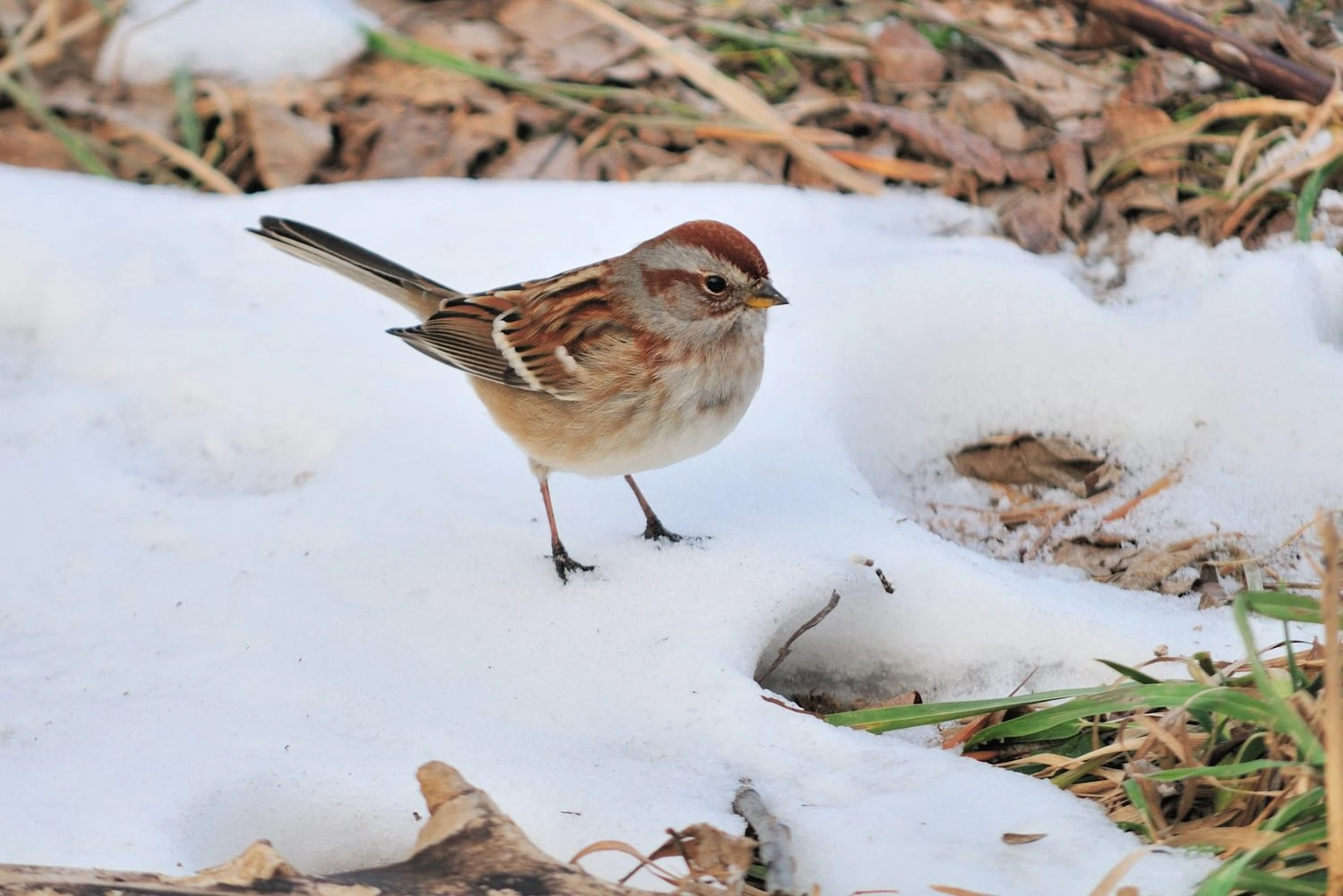
American Tree Sparrows are winter birds in Utah and start arriving as early as September, and some stay until May, but November until February are the best months to spot them. They are recorded in 2% of winter checklists.
American Tree sparrows are long-tailed brown-streaked plump birds with rusty caps, gray faces, and a rusty eye line.
- Spizelloides arborea
- Length: 5.5 in (14 cm)
- Weight: 0.5-1.0 oz (13-28 g)
- Wingspan: 9.4 in (24 cm)
American Tree Sparrows are a bird of winter in the US and a bird of summer in Canada.
They breed in the far north of Canada and in Alaska and migrate to most US states for the winter, except the Pacific and Gulf Coasts.
You can find American Tree Sparrows foraging in small flocks in weedy fields and under bird feeders.
American Tree Sparrows sounds: Males sing a pleasant song from late winter, before migration. Their song is a tuneful series of rising and falling whistles.
Nests of American Tree Sparrows’ are usually on or near to the ground and are made of twigs, grass, and moss. They lay around five eggs, and these take just under two weeks to hatch and just over a week for the young to fledge.
Attract American Tree Sparrows to your backyard platform feeders with black oil sunflower seeds, nyjer, cracked corn, and millet. They also feed seeds dropped on the ground from tube feeders.
Fun fact: American Tree Sparrows do not spend much time in trees but forage and nest on the ground. Their name comes from European settlers that thought they looked similar to the European Tree Sparrow.
Sparrows in Utah during Migration
Lincoln’s Sparrow
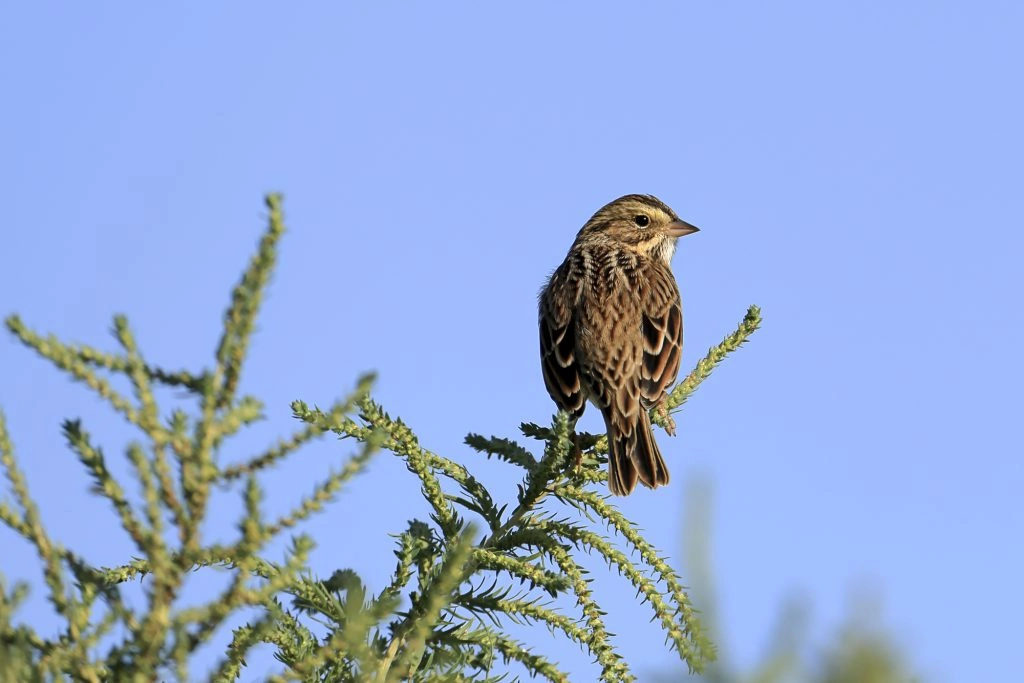
Lincoln’s Sparrows are mainly spotted in Utah during the spring and fall migrations, but they are also here during the breeding season in June and July. They are recorded in 2% of summer checklists and up to 6% during migrations.
Lincoln’s Sparrows are medium-sized sparrows, mainly gray in color and with streaks of brown across their wings and chest and white bellies. Their heads may look pointed when they raise their crown feathers. Its eyering is buffy and with a gray eyebrow area and dark eye line.
- Melospiza lincolnii
- Length: 5.1-5.9 in (13-15 cm)
- Weight: 0.6-0.7 oz (17-19 g)
- Wingspan: 7.5-8.7 in (19-22 cm)
Lincoln’s Sparrows breed in Canada and parts of western US states and migrate to southern US states, the Pacific Coast, and Mexico for winter. They can be seen during migration in the rest of the US.
You can find Lincoln’s Sparrow mostly in densely-covered shrubs and thickets, particularly near streams and wet or damp areas. They migrate to tropical but humid forests during the winter.
Lincoln’s Sparrows mostly eat weeds and grasses during the winter. During the breeding season, they will eat insects like spiders, ants, and caterpillars, but they still feed plants to their young.
Lincoln’s Sparrow sounds: Their song is a fast trill of notes and some buzzes that is one of the most tuneful of all the sparrows.
Nest of Lincoln’s Sparrows are built by females on the ground, protected and screened by thick shrubs. The nests are lined with moss or grass, and they lay around four eggs.
The eggs take up to two weeks to hatch, and the young leave the nest in under two weeks after hatching. Their flying skills improve fast, and by the 6th day, they can fly more than ten meters.
Fun fact: Lincoln’s Sparrows are very secretive birds and are not often seen but can be recognized by their sweet song.
Lark Bunting
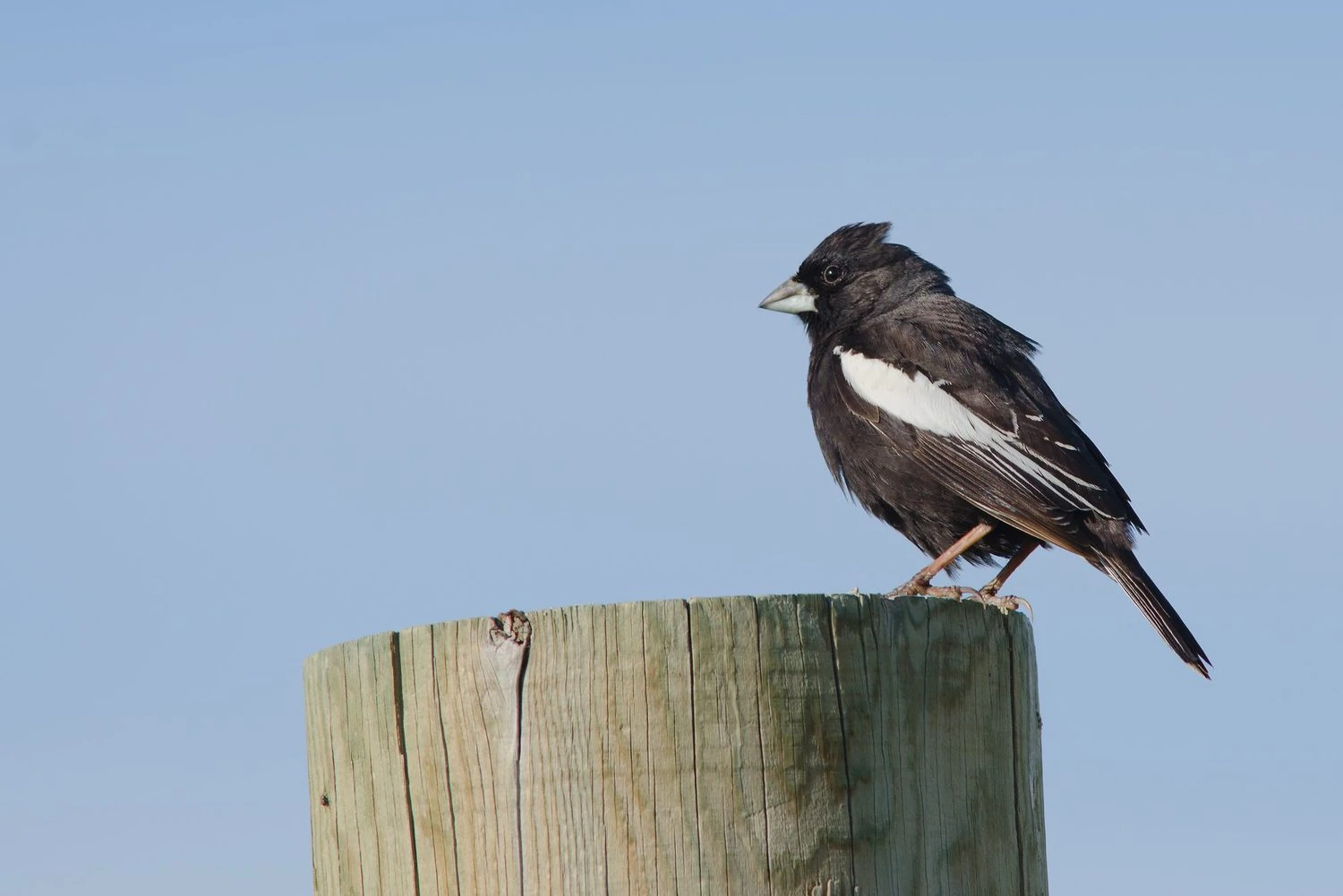
Lark Buntings are extremely rare to spot in Utah, but there have been a few sightings here during migration.
Male Lark Buntings are one of the easiest of the sparrow family to recognize. Males are black with a white wing patch. However, females and non-breeding males are brown-streaked in color, but they also have white in their wings.
- Calamospiza melanocorys
- Length: 5.5-7.1 in (14-18 cm)
- Weight: 1.3-1.5 oz (35.3-41.3 g)
- Wingspan: 9.8-11.0 in (25-28 cm)
Lark Buntings breed in central states and southern Canada and migrate to the southern Great Plains and northern Mexico for winter. However, some birds remain all year in southern US states.
You can find Lark Bunting on the ground in open grasslands and prairie with sagebrush. They eat seeds, insects, and some fruit.
Lark Bunting Call/Song:
The nests of Lark Bunting are built by both males and females and are made from grass and leaves lined with soft grass and animal hair. They lay up to five eggs that take around eleven days to hatch and a further week for the young to leave the nest.
Fun fact: Male Lark Buntings sing while flying back down from height in the breeding season.
How to Attract Sparrows to Your Backyard
Sparrows are easy to attract to your yard with these easy to follow tips.
- Provide their favourite seeds which include sunflower seeds nyjer, millet and cracked corn.
- Plant native plants and shrubs to attract insects
- Provide a water feature with clean running water
- Don’t put feeders near sheltered areas where cats may pounce.
Most Commonly Spotted Sparrows in Utah:
Bird watchers submit checklists on ebird, and this shows how frequently all the sparrows in Utah are spotted:
- Dark-eyed Junco 25.0%
- House Sparrow 22.8%
- Song Sparrow 21.7%
- White-crowned Sparrow 16.0%
- Spotted Towhee 12.9%
- Chipping Sparrow 6.2%
- Lark Sparrow 3.0%
- Green-tailed Towhee 3.0%
- Brewer’s Sparrow 2.6%
- Savannah Sparrow 2.2%
- Vesper Sparrow 2.1%
- Lincoln’s Sparrow 1.9%
- Black-throated Sparrow 1.8%
- Abert’s Towhee 1.5%
- Fox Sparrow 1.1%
- American Tree Sparrow 0.7%
- Sagebrush Sparrow 0.5%
- Black-chinned Sparrow 0.2%
- Grasshopper Sparrow 0.2%
- Rufous-crowned Sparrow 0.1%
- Lark Bunting 0.1%

